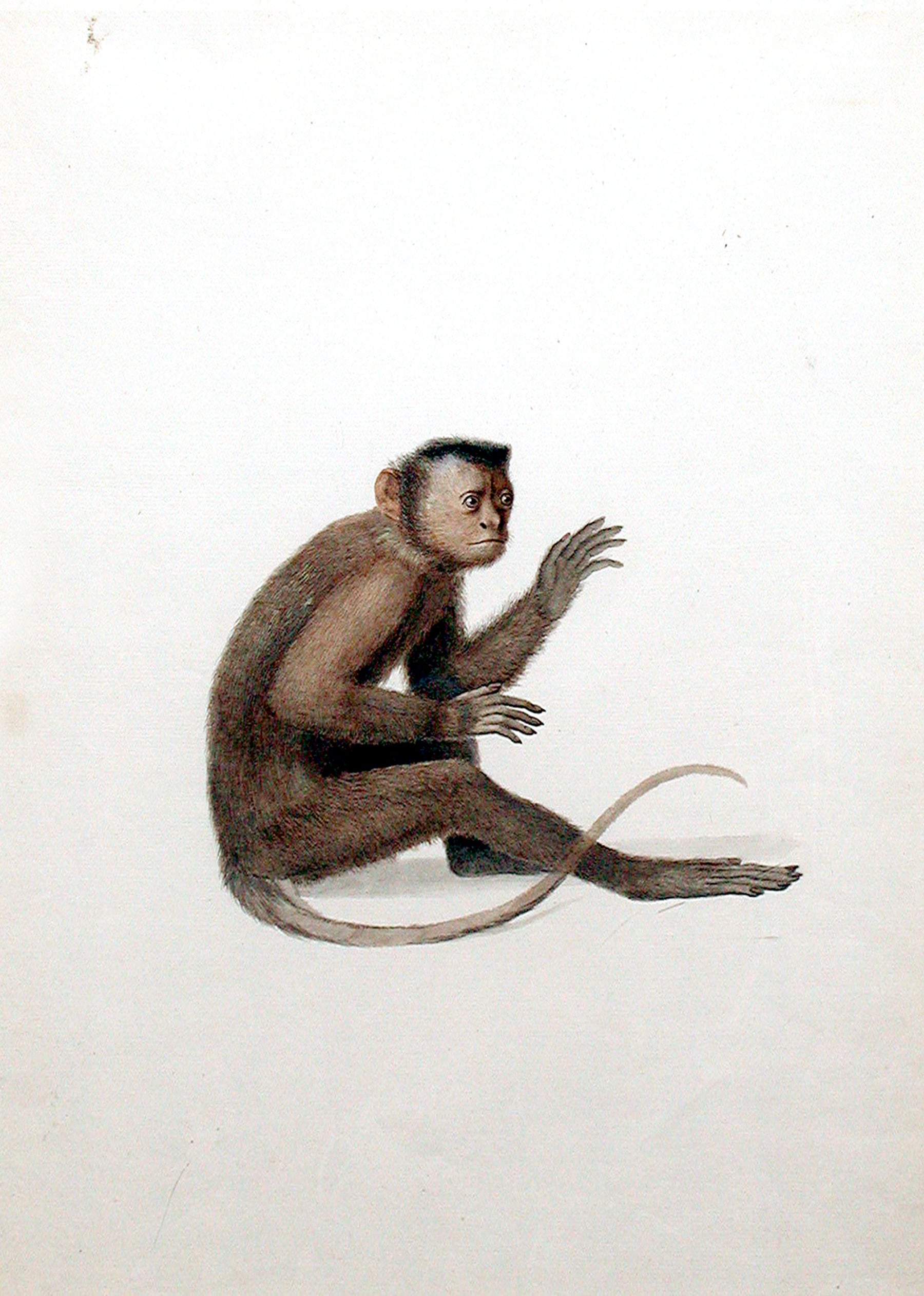from: The Finest Corpus of 18th and 19th century Watercolors Relating to South America Extant
JEAN-BAPTISTE AUDEBERT (FRENCH, 1759-1800) [Monkey Study]
JEAN-BAPTISTE AUDEBERT (FRENCH, 1759-1800) [Monkey Study]
Couldn't load pickup availability
JEAN-BAPTISTE AUDEBERT (FRENCH, 1759-1800)
[Monkey Study]
Unpublished original watercolor study for Histoire Naturelle de Singes et des Makis
[The Natural History of Apes and Monkeys]
Watercolor and gouache on paper Ca. 1790-1800
Paper size: 16 ½ x 12 in Frame size: 27 ¾ x 23 ¼ in
JEAN-BAPTISTE AUDEBERT (FRENCH, 1759–1800)
Histoire Naturelle de Singes et des Makis
Watercolor on paper
France, circa 1797–1800
In the twilight years of the Ancien Régime and its revolutionary aftermath, a wave of scientific and philosophical innovation swept through France, centered at the Jardin des Plantes—later the Musée National d’Histoire Naturelle. Early figures such as Georges-Louis Leclerc, Comte de Buffon, proposed radical ideas about species variation and common ancestry, shaping the intellectual environment that would influence naturalists including Étienne Geoffroy St. Hilaire, Georges Cuvier, and Jean-Baptiste Lamarck.
Amid this exhilarating climate, a generation of artists emerged as scientific illustrators, their talents essential to the new visual language of zoology and ornithology. Jean-Baptiste Audebert distinguished himself among these, particularly for his luminous, meticulously detailed studies of primates. Trained as a miniaturist in Rochefort, Audebert brought a precision and delicacy to his natural history illustrations that rivaled the work of contemporaries such as Nicholas Robert, Pierre-Joseph Redouté, and Gerard van Spaendonck.
The present work relates to Histoire Naturelle de Singes et des Makis—the only major publication Audebert completed during his lifetime, issued in ten parts between 1797 and 1800. His drawings combine scientific fidelity with aesthetic sensitivity, portraying not just anatomical correctness but the personality and expressive nuance of each animal. These qualities made Audebert’s work a critical bridge between Enlightenment naturalism and the later evolutionary theories of Charles Darwin.
Both visually stunning and intellectually vital, Audebert’s watercolors remain enduring testaments to the unity of science and art at a pivotal moment in human understanding of the natural world.
![JEAN-BAPTISTE AUDEBERT (FRENCH, 1759-1800) [Monkey Study]](http://aradernyc.com/cdn/shop/files/Audebertmonkey_MonkeyStudy.jpg?v=1744752585&width=1445)

